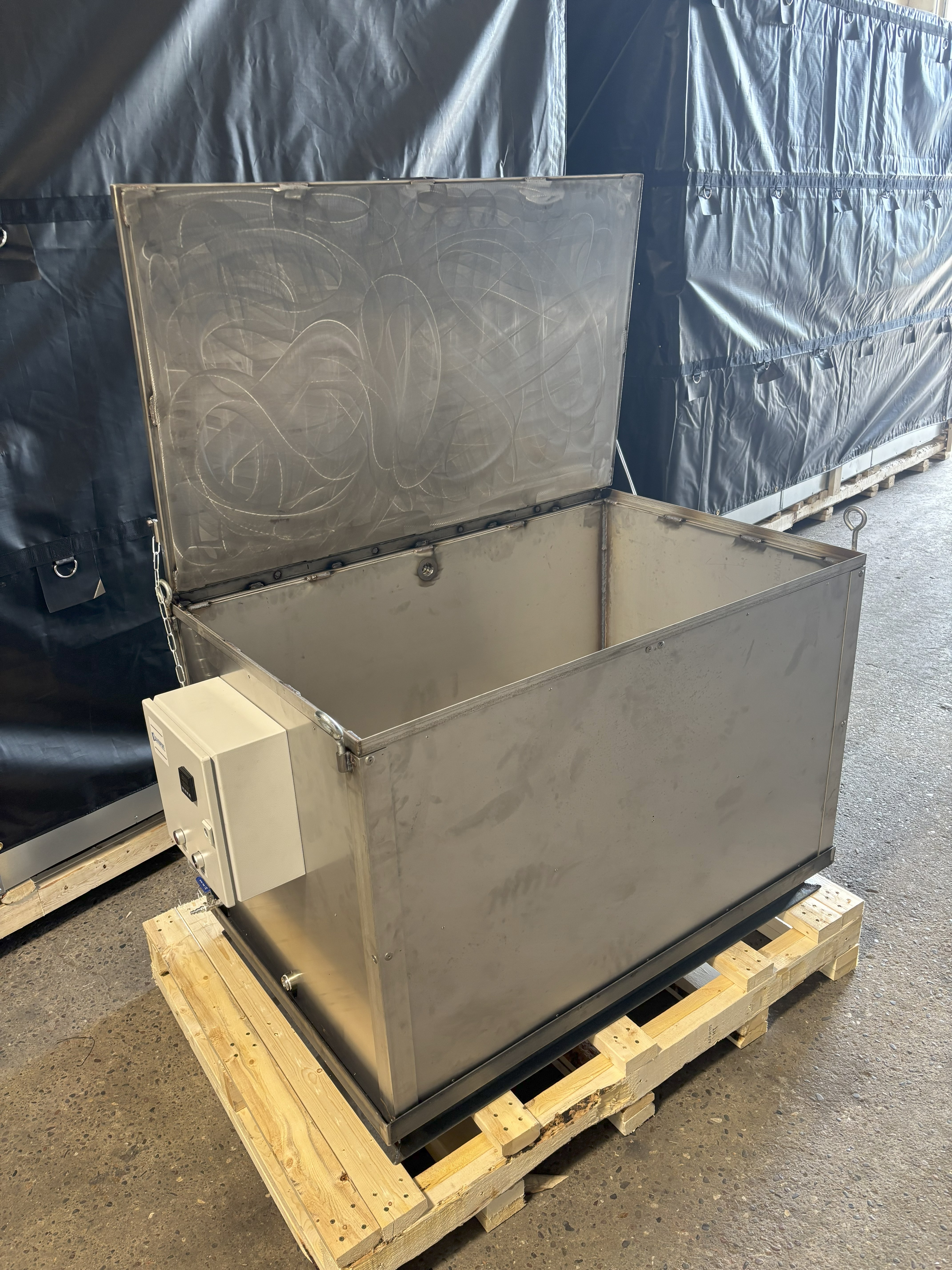Proper Tank Setup for Chemical Powder Coat Removal

Proper Tank Setup for Chemical Powder Coat Removal
Written by: GCCWhen it comes to chemical powder coat removal, the success of your operation depends heavily on the proper tank setup. A well-chosen tank not only ensures efficiency and consistency but also enhances safety and extends the lifespan of your stripping chemicals. Below, we’ll cover the key considerations for tank materials, safety tips, and setup best practices to keep your stripping operation running smoothly.
Choosing the Right Tank Materials
The first step in building a safe and efficient powder coat stripping tank is selecting the right material. Since chemical paint strippers and powder coat removers are highly reactive, the wrong tank construction can lead to corrosion, leaks, or contamination.
Carbon Steel with Heavy Lining: One of the most common choices, but must be lined with an acid/alkali-resistant coating (such as epoxy or phenolic lining).
Stainless Steel (304 or 316): Highly resistant to chemical corrosion, durable, and long-lasting. A preferred option for many large-scale operations.
Polypropylene or HDPE (High-Density Polyethylene): Excellent for smaller tanks and less aggressive chemistries. These plastics resist most strippers and offer cost efficiency.
Avoid Mild Steel or Aluminum: These materials can corrode rapidly, contaminate your chemical bath, and create dangerous reactions.
Choosing the Right Chemical Stripper
Equally important as the tank itself is selecting the correct chemical powder coat remover for your application. Different strippers are formulated for specific coatings, substrates, and process conditions.
Solvent-Based Strippers: Highly effective for rapid removal, especially on tougher powder coatings. Require strong ventilation due to vapor release.
Alkaline Strippers: Cost-effective, water-based, and safer for operators. Best for general-purpose stripping but may require heating for effectiveness.
Specialty Blends: Tailored formulations that combine solvents, surfactants, or accelerators to balance speed, safety, and material compatibility.
Key Considerations When Choosing a Stripper:
Substrate Material: Ensure the stripper won’t damage the base substrate (steel, aluminum, or other alloys).
Coating Type: Not all coatings are equal; thicker or high-temp cured coatings may need stronger formulations.
Operating Conditions: Consider temperature range, tank size, and agitation systems.
Environmental & Safety Regulations: Look for low-VOC, non-methylene chloride formulations where possible to reduce hazards. Always choose products compliant with OSHA, EPA, and local environmental guidelines.
Bath Longevity: Higher-quality strippers resist sludge buildup and maintain stripping power longer, lowering overall costs.
For best results, work with your chemical supplier to match the stripper to your specific application. Testing a small batch before full-scale use is always recommended.
Safety Tips for Tank Setup and Operation
Working with chemical strippers always requires strict safety protocols to protect workers and maintain compliance.
Ventilation: Ensure tanks are installed in a well-ventilated area or fitted with an exhaust system to reduce exposure to chemical vapors.
Personal Protective Equipment (PPE): Operators should wear chemical-resistant gloves, safety goggles, aprons, and respirators as needed.
Secondary Containment: Place tanks inside containment basins to prevent leaks or spills from spreading.
Heating Controls: If your process requires heated chemical baths, install accurate thermostats and overheat protection to avoid decomposition of the stripper.
Regular Inspections: Check tanks for cracks, corrosion, or liner damage to prevent leaks and contamination.
Emergency Preparedness: Keep neutralizing agents, spill kits, and eyewash stations nearby at all times.
Best Practices for Efficient Operation
Agitation Systems: Circulation pumps or air agitation can help maintain consistent chemical activity for uniform stripping results.
Filtration: Install inline filtration to remove paint sludge, extending the life of your stripper bath.
Chemical Monitoring: Test your solution regularly for concentration and contamination to know when to recharge or replace.
Temperature Control: Operate within the recommended temperature range for maximum stripping efficiency without damaging parts.
Final Thoughts
A properly designed chemical powder coat removal tank setup is essential for both safety and efficiency. By choosing the right tank materials, implementing strong safety practices, and following maintenance best practices, you’ll not only improve stripping results but also extend the life of your chemicals and equipment.
For professional-grade chemical strippers and technical support on setting up your tank, contact General Chemical Corp. Our experts can guide you toward the safest and most efficient solution for your operation.
